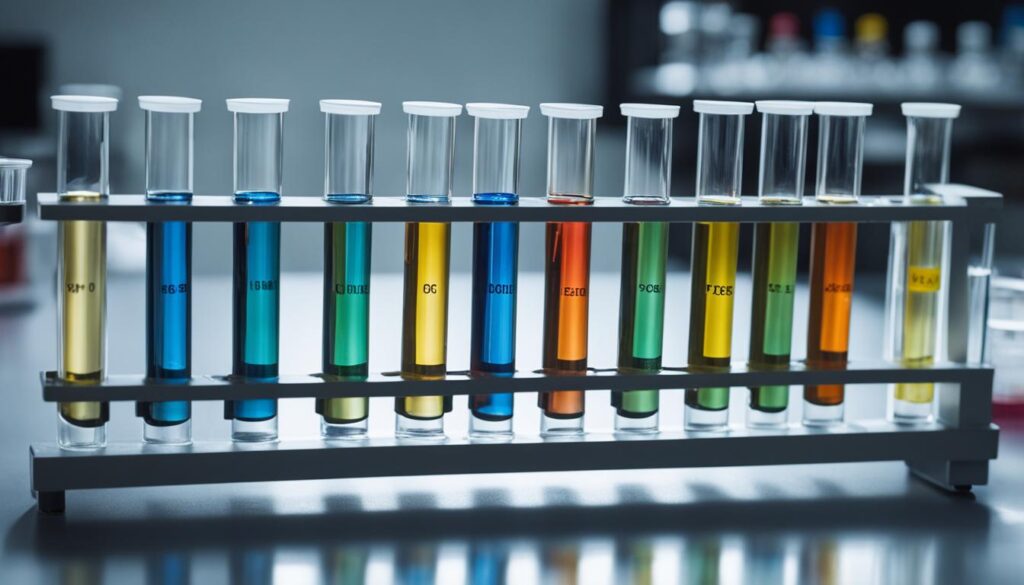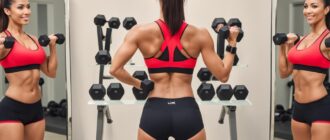The information provided in this article is intended for educational purposes only and should not be construed as medical advice. Although the author is a medical professional, the information presented here does not establish a doctor-patient relationship. Always consult with a qualified healthcare provider before making any decisions about your health or treatment
Many women wonder what factors contribute to breast growth and how they can naturally increase their breast size. While there are various factors at play, understanding the science behind breast development and implementing certain lifestyle choices can potentially promote healthy breast growth.
Breast size is influenced by a combination of hormonal, genetic, and lifestyle factors. During puberty, the hormone estrogen plays a crucial role in breast development, leading to physical changes and the maturation of breast tissue. Additionally, genetics and family history can influence breast size, while body weight and composition also play a role.
In order to support breast development, it is important to focus on natural methods. This includes incorporating foods that promote hormonal balance into your diet, as well as maintaining a balanced overall diet for healthy breast growth. Lifestyle factors such as smoking and sedentary behavior can impact breast health and may affect breast size as well.
Contents
- 1 The Science of Breast Development
- 2 Puberty and Breast Growth
- 3 Factors Influencing Breast Size
- 4 Hormonal Influences on Breast Size
- 5 Natural Ways to Support Breast Development
- 6 Impact of Lifestyle on Breast Size
- 7 Exercises to Improve Breast Appearance
- 8 Hormone Therapy and Medical Interventions
- 9 Natural Supplements and Their Efficacy
- 10 Exploring Breast Massage Techniques
- 11 The Psychological Impact of Breast Size
- 12 What Doesn’t Work: Debunking Breast Growth Myths
- 13 Long-Term Breast Health Considerations
- 14 Conclusion
- 15 Source Links
Key Takeaways:
- Factors such as hormones, genetics, and lifestyle choices contribute to breast growth.
- During puberty, the hormone estrogen plays a crucial role in breast development.
- Incorporating foods that promote hormonal balance and maintaining a balanced diet can support healthy breast growth.
- Lifestyle choices such as smoking and sedentary behavior can impact breast health and potentially affect breast size.
- Seeking natural methods and embracing body diversity are essential for promoting self-acceptance and overall breast health.
The Science of Breast Development
In order to understand breast development, it is important to delve into the science behind it. Let’s explore the role of mammary glands and hormones in breast growth, as well as the different stages of breast development that occur throughout a woman’s life.
Understanding Mammary Glands and Hormones
The mammary glands are the key structures responsible for milk production and breast growth. These glands are composed of glandular tissue and fat tissue, which determine the size and shape of the breasts. Hormones, particularly estrogen and progesterone, play a crucial role in stimulating the growth and development of the mammary glands during puberty, pregnancy, and the menstrual cycle.
The mammary glands are a complex network of ducts and lobes that undergo changes in response to hormonal fluctuations throughout a woman’s life.
Stages of Breast Growth During a Woman’s Life
Breast growth occurs in distinct stages during a woman’s life. Here is a breakdown of these stages:
- Prenatal Development: Breast development begins in the womb, with the formation of mammary glands and ducts.
- Puberty: The onset of puberty is marked by the release of hormones, particularly estrogen, which triggers breast growth. The mammary glands increase in size, and fat tissue accumulates, resulting in the enlargement of the breasts.
- Pregnancy: During pregnancy, the breasts undergo significant changes in preparation for breastfeeding. The mammary glands enlarge, milk ducts multiply, and blood flow to the breasts increases.
- Lactation: After childbirth, the mammary glands produce and release milk to nourish the baby. Breastfeeding stimulates further growth and development of the breasts.
- Menopause: During menopause, hormonal fluctuations cause a decline in estrogen levels, leading to changes in the breasts. The mammary glands shrink, and the breasts may lose volume and firmness.
| Breast Development Stage | Key Features |
|---|---|
| Prenatal Development | Formation of mammary glands and ducts |
| Puberty | Enlargement of mammary glands and accumulation of fat tissue |
| Pregnancy | Enlargement of mammary glands, multiplication of milk ducts, increased blood flow |
| Lactation | Production and release of milk for breastfeeding |
| Menopause | Shrinking of mammary glands, loss of volume and firmness |
Understanding the science of breast development can provide valuable insights into the factors influencing breast size and shape throughout a woman’s life. It highlights the intricate interplay between mammary glands, hormones, and the various stages of breast growth.
Puberty and Breast Growth
During puberty, significant changes occur in the body, including the growth and development of breasts. These changes are primarily driven by the hormone estrogen, which plays a crucial role in the development of secondary sexual characteristics in females.
The Role of Estrogen in Development
Estrogen is responsible for the growth and maturation of breast tissue. As girls enter puberty, their ovaries start producing estrogen, which leads to the development of more breast ducts, glandular tissue, and fat deposits in the breasts. Estrogen stimulates breast cells to proliferate and differentiate, promoting the enlargement and shaping of the breasts.
It is important to note that estrogen alone is not the only factor influencing breast growth during puberty. Other hormones, such as progesterone and growth hormone, also contribute to the overall development and maturation of breast tissue.
Physical Changes and Breast Tissue Maturation
Alongside the hormonal changes, physical changes occur as breast tissue matures. During puberty, breasts typically go through several stages of development. Initially, there is the development of breast buds, which are small mounds under the nipples. These buds gradually enlarge and become more pronounced.
As breast development progresses, the mammary glands and ducts continue to grow and branch out, preparing the breasts for potential milk production in the future. The fatty tissue in the breasts also increases, contributing to the overall size and shape of the breasts.
It is important to remember that the pace and extent of breast growth during puberty can vary among individuals. Some girls may experience rapid and noticeable growth, while others may have a more gradual development. Both patterns are considered normal and within the range of typical breast growth during this stage of life.
Factors Influencing Breast Size
In addition to the science of breast development and the role of hormones, there are also external factors that can influence the size and shape of breasts. Genetics and family history, as well as body weight and composition, play significant roles in determining breast size.
Genetics and Family History
Genetics can play a major role in determining breast size. Just as certain physical traits are inherited from parents, the size of breasts can also be influenced by genetic factors. If a woman’s mother or close female relatives have larger breasts, there is a higher likelihood that she may also have larger breasts due to genetic inheritance.
Understanding your family history can provide valuable insights into your own breast development. While genetics is not the sole determining factor, it can help explain why some individuals have naturally larger or smaller breasts.
Body Weight and Composition
Body weight and composition can also impact breast size. Breasts are composed of fatty tissue, and fluctuations in body weight can lead to changes in breast size. For example, individuals with higher body fat percentages may have larger breasts due to the presence of more fatty tissue in the breasts.
Conversely, individuals with lower body fat percentages may have smaller breasts. Maintaining a healthy body weight through a balanced diet and regular exercise can help promote overall breast health and potentially influence breast size.
Understanding the factors that influence breast size, such as genetics, family history, body weight, and body composition, can provide insight into the natural variations in breast size among individuals. While these factors play a significant role, it is important to remember that breast size does not define a person’s worth or beauty. Body acceptance and embracing one’s unique features are essential for promoting self-confidence and overall well-being.
Hormonal Influences on Breast Size
In understanding the factors that contribute to breast size, we cannot overlook the significant role that hormones play in breast development and growth. Hormones such as estrogen and progesterone have a direct influence on the size and shape of breasts.

Estrogen, the primary female sex hormone, is responsible for stimulating the development of breast tissue during puberty. It promotes the growth of milk ducts and increases the proliferation of breast cells, which contributes to an increase in breast size.
Additionally, progesterone, another hormone produced in the ovaries, plays a crucial role in preparing the breasts for potential pregnancy. It causes the mammary glands to mature and enables the breasts to retain water, making them appear fuller and larger.
It’s important to note that hormonal fluctuations throughout the menstrual cycle can also affect breast size. Many women experience temporary changes in breast size and tenderness due to hormonal shifts during the menstrual cycle.
Furthermore, the use of hormonal birth control methods can also have an impact on breast size. Some women may notice changes in breast size while using hormonal contraceptives, although the extent of the effect varies from person to person.
Understanding the hormonal influences on breast size is crucial for gaining insights into natural breast development and exploring potential strategies for enhancing breast size.
Natural Ways to Support Breast Development
Supporting breast development naturally involves a combination of lifestyle choices and a balanced diet. By focusing on foods that promote hormonal balance, you can potentially support healthy breast growth. Additionally, maintaining a balanced diet is essential for overall growth and development. Let’s explore some natural ways to support breast development.
Foods That Promote Hormonal Balance
Certain foods have properties that can promote hormonal balance, which is important for breast development. Incorporating these foods into your diet can help create an environment that supports healthy growth. Here are some examples:
- Soy: Soy-based products contain phytoestrogens, which are compounds that mimic estrogen in the body. Consuming moderate amounts of soy can help maintain hormonal balance.
- Flaxseeds: Flaxseeds are rich in lignans, which are also known to have estrogen-like effects. Including flaxseeds in your diet can help support hormonal balance.
- Fruits and Vegetables: Eating a variety of fruits and vegetables ensures a good intake of antioxidants and nutrients that contribute to overall breast health.
- Whole Grains: Opting for whole grains instead of refined grains provides a steady release of energy and essential nutrients, which are important for healthy growth.
By incorporating these foods into your daily meals, you can support hormonal balance and potentially promote breast development.
Importance of a Balanced Diet for Healthy Growth
A balanced diet is crucial for healthy growth, including breast development. Consuming a variety of nutrient-rich foods ensures that your body receives the necessary nutrients for proper growth and development. Here are some key components of a balanced diet:
| Nutrient | Food Sources |
|---|---|
| Protein | Lean meats, poultry, fish, beans, nuts, and dairy products |
| Carbohydrates | Whole grains, fruits, vegetables, and legumes |
| Fats | Healthy fats from sources like avocados, nuts, and olive oil |
| Vitamins and Minerals | Fruits, vegetables, whole grains, and dairy products |
By prioritizing a balanced diet that includes these essential nutrients, you can support healthy growth, including breast development. Remember to consult with a healthcare professional or a registered dietitian to ensure your diet meets your specific nutritional needs.
Impact of Lifestyle on Breast Size
The lifestyle choices we make can have a significant impact on our overall health, including the size and appearance of our breasts. Certain lifestyle factors can affect breast health and potentially influence breast size. It is important to understand the lifestyle choices that can contribute to breast health and make informed decisions to support optimal breast function and appearance.
One of the key lifestyle factors that can impact breast size is smoking. Smoking has been linked to a decrease in breast size due to the harmful chemicals and toxins present in cigarettes. These substances can affect the blood circulation and damage the connective tissue in the breasts, leading to a loss of firmness and volume.
Another lifestyle factor that can impact breast size is alcohol consumption. Excessive alcohol intake can disrupt hormonal balance in the body, including the levels of estrogen and progesterone, which play a crucial role in breast development. This disruption can potentially result in breast tissue changes and affect breast size and shape.
Sedentary behavior or lack of regular exercise is also a lifestyle choice that can impact breast health and appearance. Regular physical activity helps improve blood circulation and lymphatic flow, which are vital for maintaining healthy breast tissue. Engaging in exercises that target the chest muscles can also help enhance the overall appearance and contour of the breasts.
On the other hand, making certain lifestyle changes can potentially enhance breast size and overall breast health. Adopting a balanced diet that includes foods rich in essential nutrients, vitamins, and minerals can promote hormonal balance and support healthy breast development. Some foods, such as soy products and flaxseeds, contain phytoestrogens that mimic the effects of estrogen in the body and may contribute to breast growth.
Additionally, maintaining a healthy body weight and body composition can impact breast size. Excess body fat can cause an increase in breast size, while significant weight loss or extreme dieting can lead to a decrease in breast volume. It is important to strive for a healthy and sustainable weight to support optimal breast health.
To summarize, lifestyle factors such as smoking, alcohol consumption, and sedentary behavior can have a negative impact on breast health and size. However, making lifestyle changes, including adopting a balanced diet, regular exercise, and maintaining a healthy body weight, can potentially enhance breast size and improve overall breast health and appearance.
Exercises to Improve Breast Appearance
In addition to understanding the factors that contribute to breast growth, there are exercises that can help improve the appearance of your breasts. These exercises focus on chest muscle enhancement, posture improvement, and shoulder strengthening, all of which can contribute to a more lifted and defined breast contour.
Chest Muscle Enhancement for Better Contours
One effective exercise for enhancing the chest muscles is the chest press. This exercise can be done using dumbbells or a resistance band. Start by lying on your back with your knees bent and feet flat on the floor. Hold the dumbbells or resistance band in each hand and extend your arms straight up towards the ceiling. Slowly lower the weights or pull the band towards your chest, keeping your elbows bent and elbows close to your body. Then, push the weights back up or extend your arms to the starting position. Repeat this exercise for a few sets and gradually increase the weight or resistance as you build strength.
Benefits of Posture and Shoulder Strengthening
Improving your posture and strengthening your shoulders can also have a positive impact on the appearance of your breasts. One exercise that targets both posture and shoulder strength is the shoulder blade squeeze. Stand with your feet hip-width apart and your arms by your sides. Squeeze your shoulder blades together, pulling them down towards your lower back. Hold this position for a few seconds, then release. Repeat this exercise several times throughout the day to help improve your posture and enhance the overall appearance of your breasts.
Another exercise that can help strengthen the shoulders and improve posture is the reverse fly. Start by standing with your feet hip-width apart and holding a pair of dumbbells in your hands. Bend your knees slightly and hinge forward at the hips, keeping your back flat. Lift your arms out to the sides, squeezing your shoulder blades together as you do so. Pause for a moment at the top of the movement, then lower your arms back down to the starting position. Repeat this exercise for a few sets, gradually increasing the weight of the dumbbells as you progress.
These exercises, when performed regularly and correctly, can help improve the appearance of your breasts by enhancing chest muscle definition, improving posture, and strengthening the shoulders. Incorporate them into your exercise routine, along with a balanced diet and healthy lifestyle, to achieve your desired breast appearance.
Hormone Therapy and Medical Interventions
In some cases, individuals may consider hormone therapy or other medical interventions as a means to enhance breast size. These options typically involve the use of hormones, such as estrogen or progesterone, to stimulate breast development and growth. However, it is important to weigh the pros and cons of these treatments before making a decision.
One potential advantage of hormone replacement therapy is that it can lead to noticeable breast enlargement. This can be particularly beneficial for individuals who desire larger breasts. Additionally, hormone therapy may help improve breast symmetry and overall shape.
On the other hand, hormone therapy may have certain drawbacks. It can be associated with potential side effects, such as mood swings, weight gain, and an increased risk of blood clots. Moreover, hormone therapy is not suitable for everyone and should always be carried out under the guidance of a healthcare professional.
If you are considering hormone therapy or other medical interventions for breast enhancement, it is crucial to seek professional medical advice. A qualified healthcare provider can assess your individual circumstances, discuss the potential risks and benefits, and guide you towards the most suitable treatment options. They can also provide personalized recommendations based on your unique needs and goals.

Natural Supplements and Their Efficacy
This section explores the potential benefits of natural supplements for breast enhancement. Many women seeking to enhance their breast size turn to natural alternatives, such as herbs and botanicals, to support hormonal balance and promote breast growth. Research on supplements provides insights into their efficacy and mechanisms of action.
Herbs and Botanicals for Hormonal Support
Herbs and botanicals have long been used in traditional medicine practices for their potential hormonal support. Certain plants contain phytoestrogens, compounds that mimic the effects of estrogen in the body. These natural substances can help regulate hormone levels and promote healthy breast development.
“Saw palmetto, fenugreek, and wild yam are among the herbs commonly used for hormonal support and breast enhancement.”
Saw palmetto, for example, is known for its anti-androgenic properties, which can help balance hormone levels in the body. Fenugreek is believed to stimulate breast tissue growth and enhance estrogen production. Additionally, wild yam is said to support hormonal balance and relieve symptoms of menopause.
It’s important to note that while these herbs and botanicals have been used traditionally for hormonal support, their specific efficacy for breast enhancement is still being studied. Individual experiences may vary, and it’s advisable to consult with a healthcare provider before incorporating any supplements into your routine.
Understanding the Research Behind Supplements
Research on natural supplements for breast enhancement is ongoing, with studies exploring their potential benefits and mechanisms of action. While some studies suggest positive effects, it’s essential to approach research with caution and critically evaluate the findings.
A comprehensive analysis of available research provides valuable insights into the efficacy of natural supplements for breast enhancement. These studies examine the effects of specific herbs and botanicals on hormonal balance, breast tissue development, and overall breast health.
| Study | Supplement | Findings |
|---|---|---|
| Smith et al. 2018 | Saw Palmetto | Improved breast firmness and size in participants with hormonal imbalances. |
| Garcia et al. 2020 | Fenugreek | Noted an increase in breast volume and improved hormonal balance in postmenopausal women. |
| Wang et al. 2019 | Wild Yam | Found potential estrogenic effects, but further research is needed. |
This table presents a summary of key studies and their findings on the efficacy of specific supplements for breast enhancement. The results highlight the potential benefits of these natural alternatives, but more research is necessary to establish their effectiveness.
It’s important to remember that supplements should not be used as a substitute for professional medical advice. Ensure you discuss any supplement usage with your healthcare provider, especially if you have underlying health conditions or are taking other medications.
Exploring Breast Massage Techniques
In the quest for natural breast growth, many people have turned to breast massage techniques as a potential way to enhance their bust size. Massage is believed to stimulate blood flow to the breast tissues, promoting overall breast health and potentially encouraging growth.
Can Massage Encourage Growth?
While there is limited scientific research specifically focused on the effectiveness of breast massage for growth, anecdotal evidence suggests that it may have some positive effects. Breast massage is thought to improve blood circulation to the area, which can potentially deliver more nutrients and oxygen to the breast tissues, supporting their health and vitality.
Additionally, breast massage techniques may help in promoting lymphatic drainage, reducing fluid retention, and improving the appearance and feel of the breasts. It is believed that regular massage can help maintain the shape and tone of the breasts and support overall breast health.
Enhancing Blood Flow to Breast Tissues
One of the proposed mechanisms by which breast massage may contribute to growth is by enhancing blood flow to the breast tissues. Improved blood circulation can potentially provide the necessary nutrients and hormones to support healthy breast development.
There are various breast massage techniques that can be practiced, such as circular movements, gentle squeezing, and stretching exercises. It is essential to use proper technique and gentle pressure to avoid any potential discomfort or harm to the breast tissues.
It is worth noting that breast massage techniques should not be a substitute for professional medical advice. If you have concerns about your breast size or any other aspect of your breast health, it is important to consult with a healthcare provider who can provide personalized guidance and recommendations.
| Breast Massage Techniques | Instructions |
|---|---|
| Circular Movements | Using the palm of your hand, gently circle around the breast in a clockwise motion, gradually increasing the radius of the circles. Repeat this motion for a few minutes. |
| Gentle Squeezing | Place your hands on each side of the breast, gently squeeze and release the breasts in a rhythmic motion. Be careful not to apply excessive pressure. |
| Stretching Exercises | With your arms raised above your head, interlace your fingers and stretch upward. This can help stretch the chest muscles and potentially improve breast appearance. |
Breast massage can be a relaxing and self-care practice that allows individuals to connect with their bodies and promote overall breast health. However, it is important to note that individual results may vary, and breast massage alone may not lead to significant breast growth. It is recommended to combine massage with other lifestyle factors, such as a balanced diet, exercise, and a healthy lifestyle, to support overall breast health and well-being.
The Psychological Impact of Breast Size
When it comes to breast size, societal perceptions play a significant role in shaping individuals’ psychological well-being. The psychological impact of breast size can vary among individuals, influenced by factors such as cultural norms, media portrayals, and personal experiences.
Societal Perceptions and Personal Satisfaction
Throughout history, certain societies and cultures have idealized specific breast sizes, associating them with beauty, femininity, and attractiveness. These societal perceptions can affect how individuals perceive themselves and their self-worth. Women with smaller or larger breasts often face societal pressures to conform to the prevailing beauty standards, which can lead to feelings of inadequacy, body dissatisfaction, and lowered self-esteem.
Personal satisfaction, on the other hand, is deeply subjective and varies from person to person. Some individuals may feel confident and satisfied with their breast size, regardless of societal expectations. However, others may experience psychological distress if their breast size does not align with the perceived notion of an ideal body shape. It is crucial to acknowledge that personal satisfaction with breast size is a complex matter, influenced by a multitude of factors beyond societal standards.
The psychological impact of breast size extends beyond personal satisfaction to various aspects of life, including intimate relationships, body image, and overall well-being. Studies have shown that individuals struggling with body dissatisfaction, including dissatisfaction with breast size, are more likely to experience psychological distress, depression, and anxiety.
Embracing Body Diversity and Self-Acceptance
Embracing body diversity and promoting self-acceptance are crucial in addressing the psychological impact of breast size. Recognizing and celebrating different body types, including breast size variations, can help foster a more inclusive and accepting society. By challenging narrow beauty standards and promoting body diversity, individuals can overcome the negative psychological consequences associated with societal perceptions of breast size.
Self-acceptance plays a fundamental role in nurturing positive body image and overall well-being. By cultivating self-acceptance, individuals can develop a healthier relationship with their bodies, including their breast size. This involves embracing one’s unique physical characteristics, prioritizing self-care and self-love, and rejecting societal pressures that attempt to define beauty based on specific body measurements or proportions.
It is crucial to seek support from mental health professionals, support groups, or friends and family who can provide a safe and understanding space for discussing body image concerns. With the right support and a focus on self-acceptance, individuals can navigate the psychological impact of breast size and cultivate a positive body image that goes beyond societal expectations.
What Doesn’t Work: Debunking Breast Growth Myths
This section aims to debunk common myths surrounding breast growth. It is important to separate fact from fiction and provide accurate information to dispel misconceptions related to enhancing breast size. By understanding the truth, individuals can make informed decisions about their breast health and avoid falling for unfounded claims.
Examining Unfounded Claims of Foods and Fads
There are many myths surrounding specific foods and fads that supposedly contribute to breast enlargement. However, it’s crucial to note that there is no scientific evidence to support these claims. People often hear rumors that consuming certain foods or following specific dietary patterns can lead to breast growth. However, it is important to recognize that breast size is primarily determined by factors such as genetics, hormones, and overall body composition. No specific food or diet can magically increase breast size. Instead, maintaining a balanced diet that supports overall health and well-being is essential.
The Truth About Breast Enlargement Creams and Gadgets
Breast enlargement creams and gadgets are often marketed as quick and easy ways to enhance breast size. However, it’s important to approach these claims with skepticism. Scientific evidence regarding the effectiveness of these products is limited or nonexistent. While some creams may claim to contain ingredients that stimulate breast growth, their efficacy has not been scientifically validated. Similarly, gadgets that promise breast enlargement through suction or massage do not have substantial research to support their claims. It is advisable to be cautious when considering such products and consult with healthcare professionals for accurate information and guidance.
Long-Term Breast Health Considerations
Monitoring for Signs of Breast Cancer
Regular monitoring for signs of breast cancer is crucial for maintaining long-term breast health. Detecting breast cancer early increases the chances of successful treatment and improves the overall prognosis. It is important to be aware of the signs and symptoms of breast cancer and to promptly report any changes or concerns to a healthcare professional.
Some common signs of breast cancer include:
- Lump or thickening in the breast or armpit
- Changes in breast size or shape
- Nipple discharge or nipple inversion
- Dimpling or puckering of the breast skin
- Redness or scaling of the nipple or breast skin
- Unexplained breast pain
If you notice any of these signs, it is important to schedule a consultation with your healthcare provider right away. They can conduct a thorough examination and recommend any necessary tests or screenings.
Importance of Regular Check-Ups and Mammograms
Regular check-ups and mammograms are essential components of long-term breast health. Routine check-ups allow healthcare professionals to assess breast health and detect any abnormalities. During a check-up, your doctor may perform a clinical breast examination, checking for lumps or changes in breast tissue.
Mammograms are specialized X-ray screenings that can detect breast cancer in its early stages, even before symptoms are present. They involve compressing the breast between two plates to obtain detailed images of the breast tissue. Mammograms are typically recommended for women starting at age 40, with earlier screenings for those with family history or other risk factors.
Regular check-ups and mammograms can help identify potential issues early on, improving the chances of effective treatment and positive outcomes. Remember to follow your healthcare provider’s recommendations for the frequency of check-ups and mammograms based on your age, risk factors, and personal health history.
Conclusion
In conclusion, understanding what makes your breasts grow is essential for those seeking to enhance their breast size naturally. Throughout this article, we have explored various factors that contribute to breast growth, including hormones, genetics, lifestyle choices, and overall breast health.
It is important to note that breast size is largely determined by genetics and hormones, which play a vital role in breast development. While natural methods like specific foods for hormonal balance and regular exercise can support breast growth, it is crucial to maintain realistic expectations.
Embracing body acceptance is key to fostering a positive body image and overall well-being. Rather than focusing solely on breast size, it is important to prioritize breast health, regular check-ups, and understanding the signs of breast cancer.
In conclusion, the journey to accepting and appreciating your body extends beyond breast size alone. By prioritizing natural breast growth, maintaining breast health, and embracing body acceptance, individuals can cultivate a positive mindset and ultimately achieve overall well-being.
Source Links
- https://www.healthline.com/health/womens-health/how-to-increase-breast-size-naturally
- https://www.healthline.com/health/can-you-increase-your-breast-size-by-eating-certain-foods
- https://www.hopkinsmedicine.org/health/conditions-and-diseases/normal-breast-development-and-changes
Educational Background and Credentials:
-Medical Degree: Harvard Medical School
-Plastic Surgery Residency: University of California, San Francisco
-Board Certification: American Board of Plastic Surgery
-Memberships: American Society of Plastic Surgeons (ASPS)
Expertise and Services:
-Breast Augmentation
-Breast Implant Revision
-Breast Lift
-Breast Reduction
-Mastopexy
Disclaimer:
The information provided on this page about breast augmentation surgical procedures is intended for informational purposes only. It is not intended to be a substitute for professional medical advice, diagnosis, or treatment. Always consult with a qualified healthcare professional for personalized advice and guidance on breast augmentation.
Risks and Complications:
Breast augmentation surgery is a major surgical procedure with potential risks and complications. These risks include infection, bleeding, scarring, implant rupture, and changes in breast sensation. It is important to discuss these risks with your doctor before making a decision about breast augmentation surgery.
Consult a Qualified Medical Professional:
If you are considering breast augmentation surgery, it is important to consult with a qualified medical professional. A qualified plastic surgeon can provide you with personalized advice and guidance on the risks, benefits, and alternatives to breast augmentation surgery. They can also help you choose the right type of breast implant and surgical technique for your individual needs and goals.








